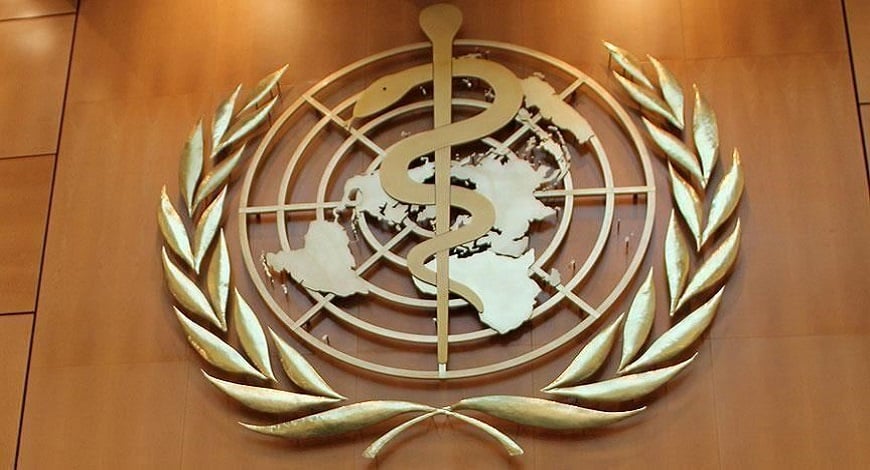Extreme weather conditions induced by climate change is the most pressing issue at the moment. With climate change comes weather woes which impact the production of wine as much as it affects the cities, human societies, and ecosystems.
On the one hand world’s largest wine producing countries, Italy and France, are experiencing a drop in the wine production; on the other hand South-East Asian countries are emerging as new wine producing regions. The answer to this change lies in weather swings which have altered the conditions for produce at the vineyards, throughout the world.
A report published by the International Organisation for Vine & Wine (OIV), had predicted a fall of 4% in the world wine production in 2021 due to weather woes in Europe. The report points out the extreme weather conditions have severely impacted production in Italy, Spain and France which lost approximately 22mhl of potential wine production to frost, hailstorms and mildew.
The French Farm Ministry, in August, estimated a fall of around 30% in the wine output. The drop is considered the lowest in decades. The ministry attributed the lower production to weather changes including unseasonal spring frost and summer rainfall. “Wine production in 2021 is forecast to be historically weak, below levels in 1991 and 2017 that were also affected by severe frost in spring,” the ministry stated in a report. According to the ministry, the predicted production is between 32.6 million and 35.6 million hectolitres, 24-30% less than 2020.
With its production also going down, Italy, the world’s largest producer of wine, too paints a grim picture. Coldiretti, a farmers association, projected a 5-10% fall in the wine output. The association said that higher temperatures and heavy downpour could drag the production down to 44-47 million hectolitres in 2021.
Southern Hemisphere countries including South America, South Africa and Australia, with relatively favourable climatic conditions lead to record high production levels, stated the OIV report.
“In India, both positive and negative impacts of climate changes have been noticed over the years,” said Manjunath VG, Vice President at Grover Zampa Vineyards, India. Unusual rain during the early grape growing season, causing loss in yields coupled with increased cost of production is quite frequent now. Increased day temperature is changing phenolic characters of grapes and harvest dates, gradually making harvest period shorter. While in some varieties, the quality of grapes and its wine has considerably increased due to extended and cooler nights during the maturity and ripening stage of grapes.
However, Manjunath was quick to warn, “Given the pandemic, it is too early to attribute the fall in Indian wine production just to climate change. Though, it has now become difficult to achieve the desired quality of grapes (before the harvest) in some of the known grape growing regions in Indian state, Maharashtra (specifically North-West region) comparatively to South-East regions of Maharashtra that produce better quality grapes. Also, Southern Karnataka is best for white grape varieties and early maturing reds and Northern Karnataka’s climate encourages medium and later maturing red varieties.”
Armenia, a Caucasian nation, which has different terroirs throughout, mostly consisting of lime stones, and a lot of sunny days which is good for vine growing, is yet to experience climate impact on wine output. “Climate change has not impacted wine production in Armenia yet. We are continuing as we have been with slightly earlier harvest dates,” said Areg Khojoyan, Director and Head Winemaker, GN Winery, Armenia.
Weather swings and wine production
Climate is one of the most important factors that influences wine production. According to a study published in the ‘Proceedings of the National Academy of Sciences’, if temperatures rise by 2 degrees Celsius, the regions of the world that are suitable for growing wine grapes could shrink by as much as 56%. In other words the suitable regions may not be able to produce the same quality and varietal grapes in the future.
“In some ways, wine is like the canary in the coal mine for climate change impacts on agriculture, because these grapes are so climate-sensitive,” said Benjamin Cook, co-author of the study.
Speaking about the weather changes and its impacts on wine grapes, Manjunath, explained that high temperatures of above 35 degree Celsius start affecting stomatal activity of grape vine leaves causing delayed ripening and a drop in fruit acidity with increased sugars. Extreme low temperatures too slow down the required ripeness. “Excess and unseasonal rains lead to a greater loss in both quantity and quality of grapes,” Manjunath added. About drought, good stress is always good, but excess stress leads to greater loss both on a short term (on the present crop yield) as well as on long term basis (next season growth and yields). So it is important to achieve a balance, he said.
“Quality of wine depends on the quality of the grape. For grapes, vegetation active energy is needed (higher than 10C). If the climate becomes warm, the day of the harvest comes early, depending on necessary sugar volumes, which doesn’t allow enough time for good taste and flavours,” said Khojoyan.
The study mentions that the cooler wine producing regions including Germany, New Zealand and the US Pacific Northwest would comparatively be unharmed in the 2 degree Celsius scenarios. The regions which are already hot like Italy, Spain, and Australia faced the largest losses, because they are already limited to planting the warmest varieties.
“Big difference in day and night temperatures brings aromas and flavours to grapes. In Armenia this delta is about 15 degree Celsius (25-38 during the day and 10-20 during the night in September). In some vine growing areas there is not enough rainfalls that’s why those vineyards are being irrigated,” said Khojoyan.
Is swapping varieties the future?
Manjunath opines that the known grape producing regions around the world are already experiencing the warmer climate. The rise in the temperature is a warning sign for the wine grape producers to shift region by region to adapt to climate change.
“But growers still must learn to grow these new varieties. That’s a big hurdle in some regions that have grown the same varieties for hundreds and hundreds of years, and they need consumers who are willing to accept different varieties from their favourite regions,” said Elizabeth Wolkovich, lead researcher of the study.
Grover Zampa Vineyards (GZV) is already experimenting with new varieties. “Few varieties are already on trial and the blueprint is ready to plant at least 50 new varieties with different clones on different rootstocks during the next two years in different regions of India including Northern regions where grapes can be harvested in similar fashion as in cooler climates (Europe),” informed Manjunath.
How to minimise impacts of climate change?
Changing the pruning system, which provides more shade and delays the day of harvest, is the best tool against climate change and to save vineyards against the weather threat, said Khojoyan. Echoing the same thought, Manjunath added, “The best way to reduce the impact is to change the pruning tactics.” For example, in India, the North-West and South-East regions of Maharashtra, where return monsoons are much lesser, GZV prunes vines early so the harvest will end before day temperatures start increasing in the summer. While for the vineyards located in the Southern part of India, Karnataka, where return monsoon is a common phenomenon, GZV prunes bit later and the comparative cooler climate and lower day temperatures help to continue the ripening process of fruits till closer to harvest.
Additionally, GZV has limited the expansion of vineyards wherever the results are not encouraging as before, and has drastically expanded vineyards in the regions of South-East Maharashtra and Northern Karnataka.
The researchers note that management practices like increased irrigation and using shade cloths can also help to protect grapevines, but only at lower levels of warming.
“Plans are put in place to adapt to latest technologies such as assessing real time water requirement for grapes vines by using sap flow sensors, use of agrivoltaics techniques in viticulture with the dual advantage of growing cooler varieties below the shade of raised solar panels and harvesting the solar energy to generate electricity as an additional income source which can help minimise increased production cost of grapes,” said Manjunath.
The authors of the reports feel that ultimately, the effectiveness of any strategy depends on growers having the options and resources to adapt at a local scale, and on reducing greenhouse gas emissions and limiting warming globally.
“The key is that there are still opportunities to adapt viticulture to a warmer world,” said Cook. “It just requires taking the problem of climate change seriously.”









